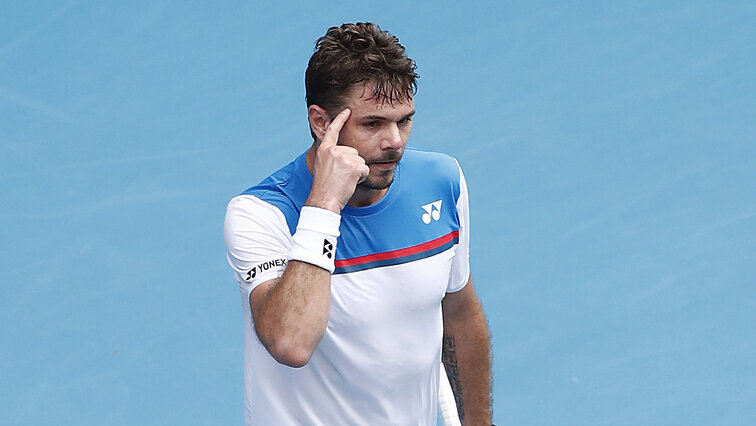How to effectively train your game intelligence during bat-free time
Tennis takes a break - at all levels. But that doesn't mean that you shouldn't work on your game right now. Especially on the mental component.
by Marco Kühn
last edit:
Mar 21, 2020, 09:47 am

What skill do you need to bring one or two triumphs home with you in your tournament matches? Sure, you want to mercilessly punish your opponents' short punches with your forehand whip. But before you bang your forehand in the back corner of the backhand, you need to be able to concentrate on the point.
You need to train your ability to focus on important game situations. Our digital world is more your enemy than your friend. In your timeline on Facebook, you only look briefly at fresh posts. Your smartphone often distracts you. In short: everyday life trains you to be able to take only very short phases of concentration.
You probably know the extremely spectacular highlight videos on YouTube. These are certainly entertaining and quickly viewed. But you should keep in mind that even these short videos, usually only three minutes long, interfere with your ability to concentrate. Unfortunately, at the moment you do not have the opportunity to go to the tennis court and hit a few balls. You can still train your game intelligence and even a bit of your concentration. If you carry out this "training" consciously and regularly over the next few days and weeks, you will be able to better assess game situations in the match.
Use the YouTube search function correctly
We had just briefly mentioned the highlight videos on YouTube. We will replace these for your training with videos of entire matches. Thanks to our digital world, you have the opportunity to watch complete matches. Simply type the name of your favorite player into YouTube search followed by "Full Match". You can of course also take older top players.
An example for your entry in the YouTube search: "Marcelo Rios Full Match". You will then receive the match between Marcelo and Nicolas Escudé at the Australia Open 1998 as the first search result. Just always pay attention to the duration of the video and you will quickly see whether it really is a whole match. As soon as you have clicked in, it is best to sit back on your couch, make yourself a tea, grab a bottle of water and at the same time open a note-taking app on your smartphone.
Your training starts
You only train your ability to concentrate by watching the entire match carefully. It is important that you watch the match without distraction. You may not necessarily be able to learn the technique from the professional players. However, you have the unique opportunity to learn the tactical and mental behavior of the absolute top players. First, analyze where you see your weaknesses. Are you having trouble attacking your opponents' too short strokes? Do you find it difficult to play safely and consistently in longer rallies? Is your serve made up of too few variations?
You can learn all of these areas (and of course many, many more) by carefully watching entire matches and applying them in your own game. Let's go through this with a simple example.
Jürgen has been swinging the racket for seven years. He has climbed to LK 16 in recent years. His strategy in the match is simple but effective: Jürgen goes over the backhand of the opponent and waits until it is too short. Unfortunately, he makes many mistakes in the attack. On weaker days, Jürgen lacks the confidence to place these balls profitably in the opponent's field.
So Jürgen watches an entire match of his idol Rafael Nadal on YouTube. He focuses on the tactical finesse of Rafa and how he manages to nail the opponent back and forth on the back and then close the point with the powerful forehand. Jürgen asked himself the following questions before the start of the match:
1) How does Rafa place his punches on the opponent's backhand?
2) How does Rafa move towards the opponent's shorter balls?
3) At what height does he play his foreheads? When does he hit the ball?
4) Where does he place his foreheads?
Jürgen's goal is to be able to answer these questions with simple notes after the end of the match. By formulating the tasks, Jürgen has sharpened his observation for the game and can watch Rafa's tactical behavior much more effectively.
You can apply this principle of learning to different areas of your game. Similarly, if you want to play more serve and volley after the bat-free period, analyze a full game by Stefan Edberg. If you want to drive your opponents crazy with moonballs in the future, then watch a match by Björn Borg in Paris.
Recommendation: take a lot of notes. It is always better to write down important findings directly so that you do not forget them again within a few days.
More from Marco Kühn can be found at www.tennis-insider.de .
